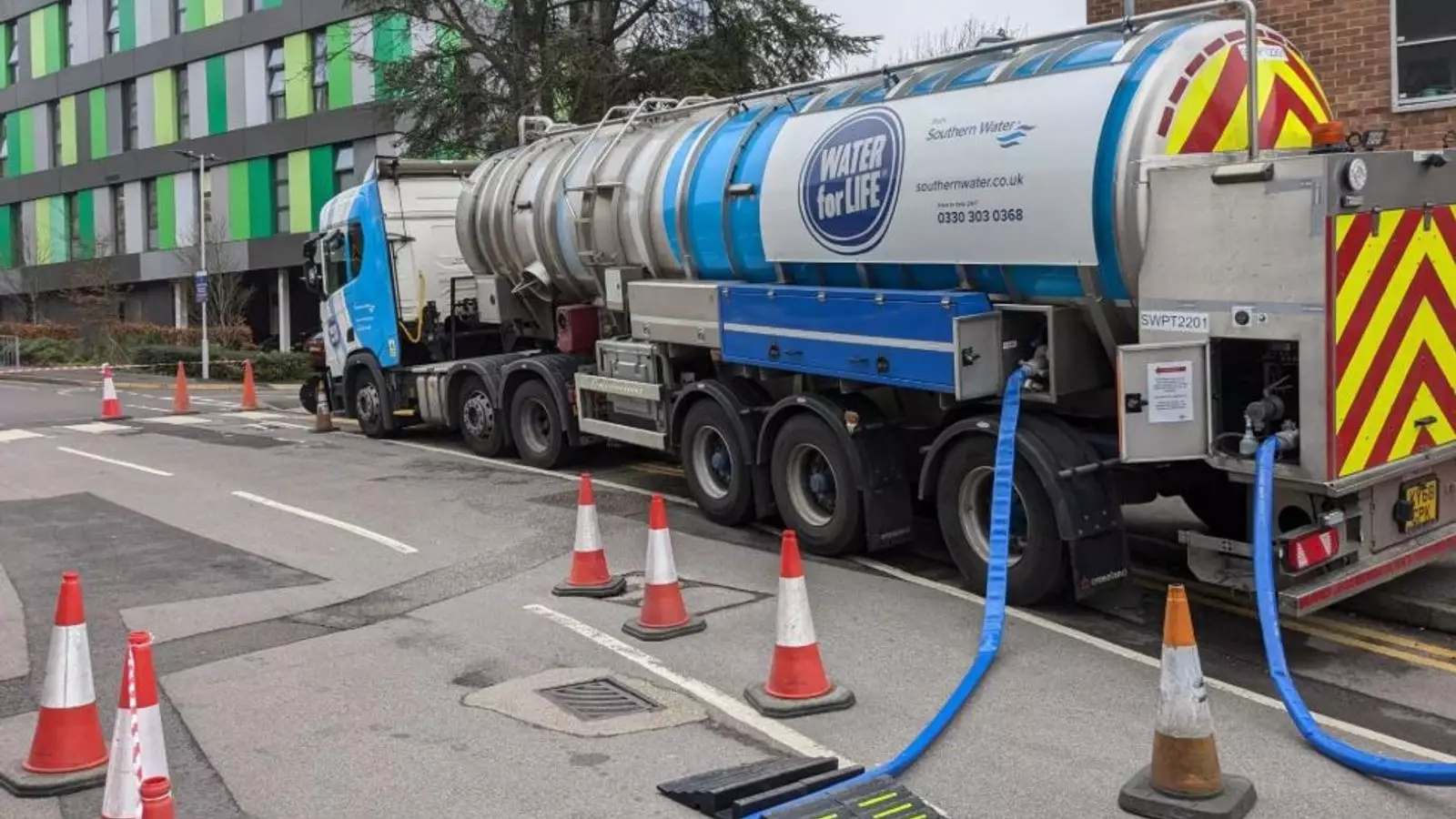In Hampshire, residents are facing a significant disruption as almost 60,000 households find themselves without a reliable water supply. This critical situation stems from a “technical issue” at Southern Water’s Testwood supply works, which has halted the flow of water to various regions including Southampton, Romsey, Eastleigh, Totton, and parts of the New Forest. Such widespread outages expose the fragility of essential services and stir concerns about the reliability of our urban infrastructure.
Southern Water’s communication regarding the problem outlines their commitment to restoring water access while simultaneously admitting the complexity of the situation. The company has set expectations that the issue may linger into the weekend, leaving residents anxious and seeking alternative solutions for their daily water needs.
Community Response and Initial Assistance
Amidst the hardships, local communities have come together in surprising ways. Bottle stations have been established at strategically important locations, such as the Places Leisure Centre in Eastleigh and major supermarkets like Sainsbury’s and Asda. These stations symbolize not only the urgency of the situation but also the resilience of the community as it navigates through adversities. Long queues at these locations highlight the widespread impact of the water supply issues and the lengths to which residents must go to secure their basic needs.
Furthermore, Southern Water has prioritized customers registered on its emergency list, ensuring that essential entities like Southampton General Hospital and Princess Anne Hospital receive dedicated water supplies. This proactive measure underscores the company’s effort to mitigate the crisis, albeit temporarily, illustrating both the urgent needs of vulnerable populations and the responsibility utilities have toward public health.
Financial Ramifications and Regulatory Planning
The timing of the water outage is particularly unfortunate as it coincides with imminent announcements regarding rising water bills in England and Wales. Southern Water has reportedly requested an exorbitant 84% increase in charges, while Thames Water seeks a 53% rise – both proposals set against a backdrop of inflationary pressures. If approved by the regulator Ofwat, these hikes will compound public dissatisfaction as consumers grapple with the reality of reduced services paired with higher costs.
Ofwat’s preliminary decision indicates a forecasted increase of more than 20% in water bills by 2030, with average household charges expected to rise from £448 to £542 annually. This stark reality poses numerous questions. Why is there such a dissonance between rising costs for consumers and the reliability of water supply? The focus on infrastructural improvements, though crucial, may be overshadowed by an urgent need for addressing current service failures.
As Southern Water works to resolve the ongoing supply issues, it becomes increasingly essential for the company to maintain transparency with affected residents and demonstrate accountability. The events unfolding in Hampshire should, ideally, serve as a catalyst for broader discussions about water management, infrastructure investment, and consumer rights.
Residents deserve a stable and reliable supply of water, especially when future talks of significant bill increases are on the horizon. This crisis is not simply a technical fault; it is an opportunity to reassess priorities within water management systems to better serve the community in both challenging times and the days to come.

Leave a Reply